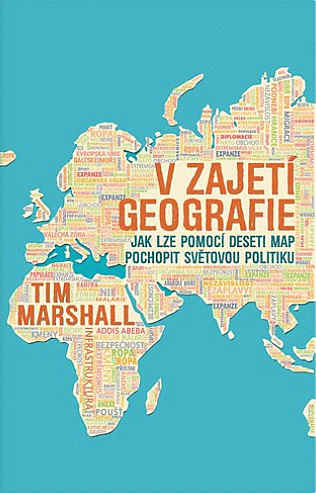Prisoners of Geography
2023-02-17 Book Tim Marshall Geography Geopolitics United States United Kingdom Russia ChinaJust finished reading of Prisoners of Geography book by journalist Tim Marshall. I am interested in history, but over the years I neglected many regions. As the title suggests, the book emphasizes geography and its impact on forming nations. The book is quite short and covers whole world, so it is natural that it cannot provide great detail. But as introduction to the world geopolitics it provides good primer and can be used as basis for further study.

The book subtitle is “Ten Maps That Explain Everything About the World”. Those are
-
Russia, its vast expanses, distances and natural resources. It covers its grow during Peter the Great, its raise to superpower after the WWII, increased influence nations that encompassed the Soviet Union, and its collapse back into many countries in 1991. In more detail it takes on remaining Russia influence over neighboring countries, military interventions and economic ties. It also provides good insight into Russian views and fears, no matter how justified they are.
-
China boundaries are defined by sea to the south and east, mountains to the west, and desert to the north. It covers its long history, European domination over 19th and 20th century, victory of communism after WWII and escape of former government to Taiwan. Good portion of the chapter is dedicated to trade routes and China recent interests in Africa and South America.
-
Third chapter discusses United States. It nicely covers definition of its borders, acquisition of Alaska from Russia, Louisiana from France or Florida from Spain. War with Mexico ended with gains of Texas and addition of Arizona, Nevada, Utah and Colorado finalized the current shape of the USA. It also touches the industrial and trade grow that left it as superpower after WWII.
-
Western Europe is source for all modern world. The chapter shows how geography formed old empires, influenced trade and evolution of the nations. The continent has mild climate with a little of serious diseases, long rivers that allow exchange of goods, fertile grounds that fed the people and produced surplus of food that can be exported. Many mountains split Europe that results in diverse languages and many nations. From historical lessons it moved to current state with European Union, common currency used by many nations and problems stemming from that. The chapter also covers role of Great Britain and its fit into the system.
-
Africa is huge and very diverse continent. It is about three times bigger than United States and features large deserts like Sahara or rain forrest areas. Even though the mankind started on the continent, due to environment limitations only few empires formed (Egypt, Great Zimbabwe, or Mali empire). Most of wars starts for water, oil or clan clashes in hastily drawn borders by colonists.
-
Sixth chapter discusses Middle East. It starts with Sykes-Picot secret agreement between France and United Kingdom on spheres of influence in the area. The line still forms most of the Syria south border. It also covers ethic and religious background of most influential groups in the region and dynamic between them.
-
India and Pakistan lie in india subcontinent limited by sea and mountains. Inside there is India, Pakistan, Bangladesh, Bhutan and Nepal. India is dominant power in the region and slowly drives itself into world superpower. The chapter also discusses Pakistan influence on Afganistan events, China interests in Tibet and Bhutan.
-
Eighth chapter covers Japan and Korea. There was not much of a surprise for me in this area as I am interested in the region for quite some time. Great deal of the chapter is related to problem of North Korea. Japan and Korea situation is briefly covered and presented as counterweight for China in the region.
-
Latin America despite its potential is greatly limited by the geography of the continent. The most developed countries are Brasil, Argentina and Chile. The chapter discusses influence of Monroe doctrine and United States influence on the countries, starting from Mexico, Panama or Venezuela, going down to southern countries. When talking about Argentina, it mentions great source for shale gas called Vaca Muerta (Dead cow) and conflict with United Kingdom about Falkland islands.
-
Arctic is presented as new battlefield for future cold war. When the frozen region melts a little more, many of natural resources become available and there are chances of competition on getting it. There are regulations called Exclusive Economic Zones that provide rights to use the resources to adjacent countries. At the moment arctic regions are in parts of Canada, Finland, Greenland, Island, Norway, Russia, Sweden and United States. Probably most advanced in the difficult conditions is Russia and it is already doing some steps to seize some areas and create precedent for using it.